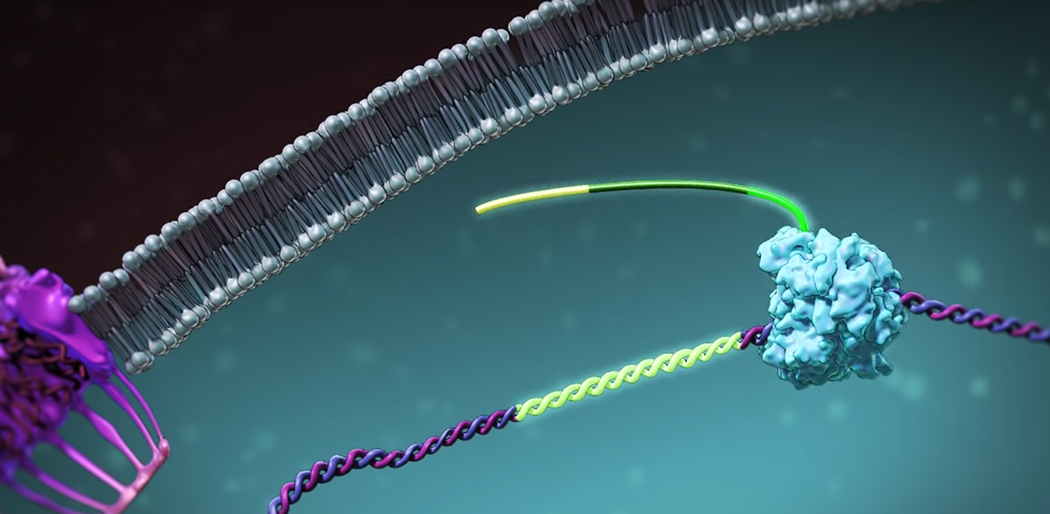Versatile target discovery platform

Our target discovery platform provides a significant and substantial competitive advantage as it:
- closely mimics the in vivo situation through the use of primary human cells with a relevant trigger and readout for a specific disease phenotype;
- identifies possible points to intervene in a disease pathway by suppressing the expression of an individual protein in these pathways; and
- enables us to rapidly analyze all of the druggable and non-druggable genes and select pharmaceutically tractable protein targets directly by their ability to regulate key disease biology.
A proof of success of this unique approach is demonstrated with filgotinib which acts on preferential JAK1, a novel target which role in a specific disease was discovered by us using our discovery platform.
The human genome consists of tens of thousands of genes which code for the proteins that make up the human body. Nearly all chronic diseases and disorders are caused by a disruption in the normal function of certain proteins. The main goal of the biopharma industry is to discover and develop molecules that alter the activity or expression of these proteins so that normal function returns and the cause of the disease is minimized or eliminated. One of the main obstacles in discovering new drugs is to understand exactly which of the body’s tens of thousands of proteins play a key role in a particular disease. Once these proteins are discovered, they become targets for drug design. Finding these targets is one of the critical steps in the drug discovery process. Our approach to target discovery is unique as our discovery platform focuses on target identification using primary human cells, and incorporates patient data and pathway screening early on, which we believe is the best way to study the effect that a protein might have on the disease in the human body.
To study proteins in human cells, we take advantage of the distinctive properties of viruses in combination with RNA interference. The virus particle has the capability to infect almost every type of human cell. The virus particles we work with have been engineered to act as a shuttle vehicle, allowing the delivery of specific pieces of DNA into human cells. Additionally, these viruses cannot replicate in the human cells they infect and do not interfere with the processes in the cell. We engineered the viruses to carry small pieces of DNA, specific for individual human genes. When the virus enters the cell, this piece of DNA leads to the production of a short sequence of RNA that is processed in the cell to become “short interfering RNA,” or siRNA, which specifically interferes with the mRNA of the protein it was designed for. As a result, the cells block, or “knock-down,” the production of a certain protein and determine its impact on restoring normal function.
Our drug discovery research is based on the targets discovered using this technology. We started by focusing on 6,000 human genes that belong to the small molecules druggable genome. We are in the process of expanding our expertise with novel technologies such as oligonucleotide-based techniques (antisense (AS) or siRNA) and degrader approaches (Proteolysis Targeting Chimeras or PROTACs). These additions enable us to go broader and explore a broader set, coming closer to the total of 20,000 protein-coding genes. Once a target is validated, we will use the most suitable method to develop a potential therapeutic drug.
In small molecule drug discovery, an assay developed to assess the activity of the target is subjected to large collections of chemical small molecules allowing the identification of chemical structures that interact with the target to block or activate its activity. These chemical structures are then modified to obtain a preclinical candidate, and upon successful optimization and preclinical testing in animal models, the product candidate is tested in humans. Other technologies to modulate relevant targets, such as oligonucleotides or PROTACs, are being explored. In both cases the result is the removal of the target from the cells leading to the prevention of its disease-contributing effects. Based on the properties of the target and its cellular location, one or more modalities are selected and developed.
This discovery approach provides starting points for the discovery and development of drugs with new modes of action. Since 2009, we have generated 49 preclinical candidates. Of these, 24 have entered first-in-human clinical development, 18 of which are believed to have novel modes of action, and 15 entered into patient studies.
In addition to our pipeline of molecules in the clinic, we have multiple discovery programs advancing toward clinical development.
